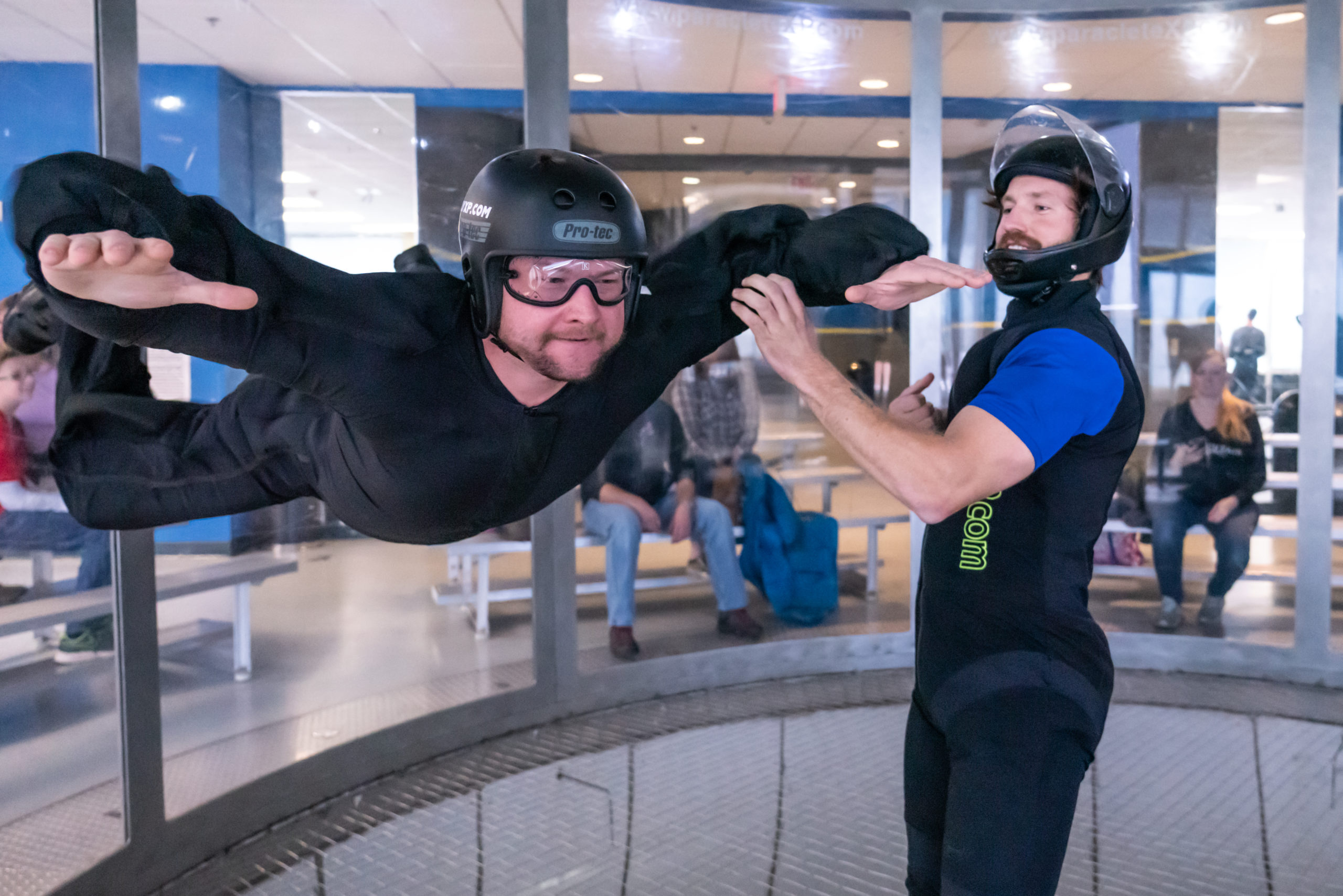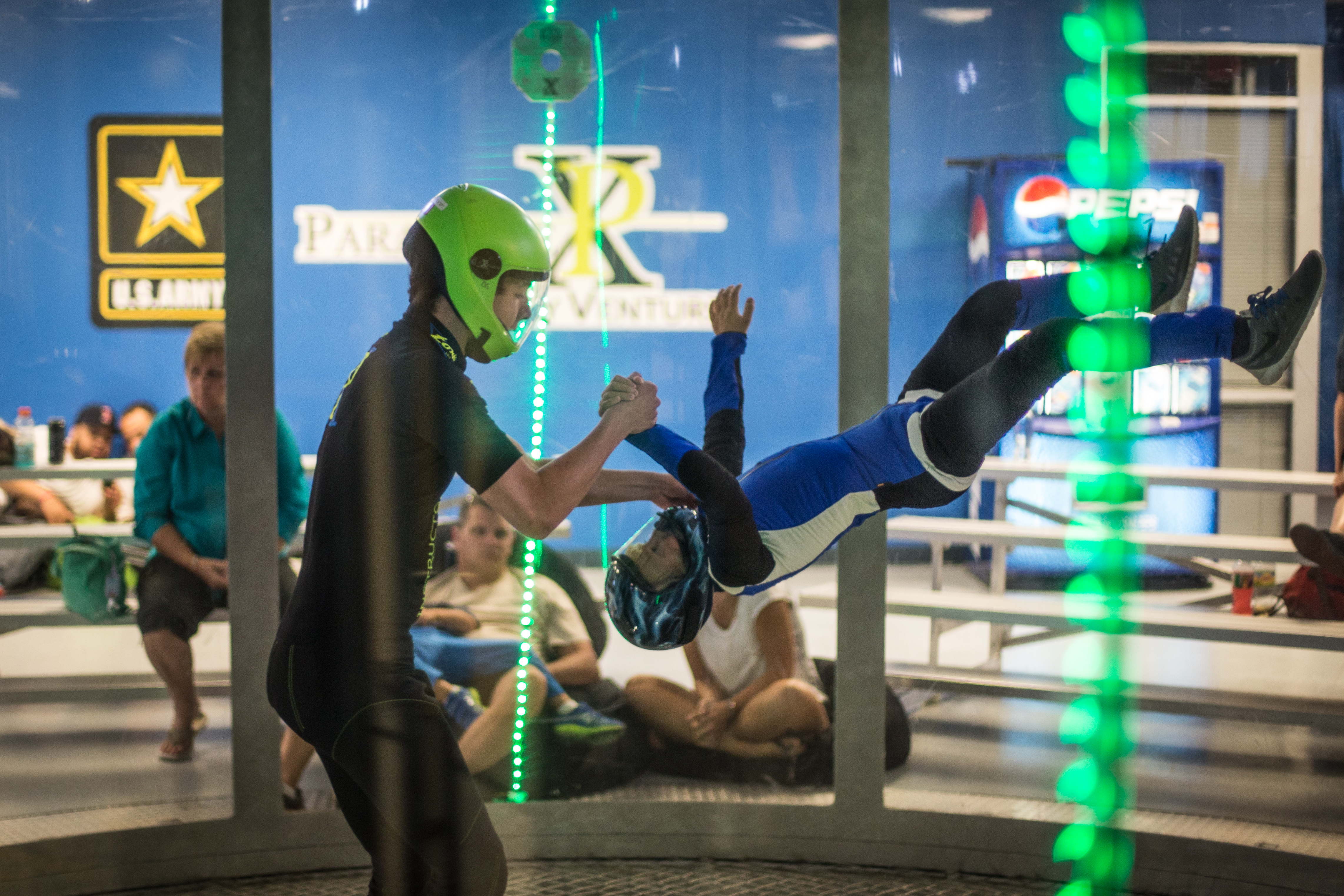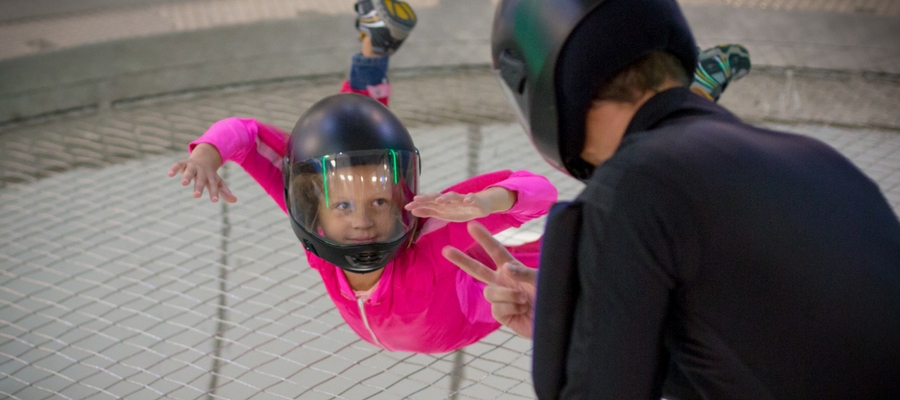Indoor Skydiving Weight Limit
Thursday, June 15, 2023
Do you want to experience the exhilarating freefall of a skydive without having to scooch your boot to the wide open door of a perfectly functioning airplane? Totally understandable! Cue indoor skydiving!
Similar to real skydiving, indoor skydiving comes with physical restrictions that are put in place to keep you and our instructors safe. Most frequently asked question in this arena: is there a weight limit for indoor skydiving? Yes, let’s look into the specifics.

What Is The Indoor Skydiving Weight Limit?
Here at ParacleteXP, our indoor skydiving weight limit is 250 lbs.
And most frequently asked follow-up question: Is there a weight limit for skydiving from a plane? Our weight limit for skydiving (for real, for real) is 230 to 250 lbs. It’s up to the instructor’s discretion if they can safely jump or fly in the tunnel with someone weighing more than 250 lbs, so please give us a call ahead of time to discuss your specific situation.
“Can you be too heavy for indoor skydiving?” is another popular question (although we think it ought to be asked in a different way … feels judgy, no?) The weight restriction for indoor skydiving is put in place to keep you and our instructors safe, and is never ever meant to make anyone feel excluded or judged. Let’s look into exactly how it all works and why a weight requirement must be enforced to help you have a successful indoor flight!
How Does Indoor Skydiving Work?
The vertical wind tunnel used for indoor skydiving is essentially a large, thick glass column that simulates the freefall portion of a skydive. The bottom of the tunnel features ginormous, high-powered fans (over 2000 horsepower worth of fans!) which blows air upward, allowing flyers to essentially float within the contained column of air.
Perhaps the biggest difference between indoor skydiving and real skydiving – besides the fact it’s inside, of course – is the role that the force of gravity plays. During the real deal, skydivers are being pulled toward the earth and are feeling the rush of the wind on their own accord; their bodies hitting the air at such a high velocity creates the “wind.”
When we ‘skydive’ in a wind tunnel, the rush of the wind is simulated and the effect of gravity essentially doesn’t matter; we choose when to turn the fan off and when to stop our ‘freefall.’ It’s a luxury we don’t have in the sky!
~Fun fact! Paraclete XP currently has the largest and most advanced wind tunnel in the United States.
So, how does it work for newbies? When you come to fly in the tunnel for the first time (GET ITTTT!!!) an instructor will be present inside the tunnel with you. The instructor will be able to either stand or fly while holding onto and guiding you through the motions of freefall. They’ll also be able to take your weight and natural body position into account and tell the wind speed (AKA fan) operator to increase or decrease the fan’s output and get as close to actual freefall as possible.

What Is The Risk Of Indoor Skydiving Over The Weight Limit?
The major risk associated with surpassing the weight limit of the tunnel is your instructor not being able to take control to prevent an accident. While the wind tunnel’s simulated freefall acts as a safer option than skydiving for real, accidents can happen.
Keep in mind that flying in the tunnel will be a completely foreign experience that is unlike anything else out there (except skydiving, hehe) and no one knows how you will react. Our instructors need to feel confident in their ability to control any and every situation. We don’t want you bonking your head into the glass wall or whacking your instructor in the face at superspeed!
- What about height? Similar to the real thing, indoor skydiving requires the flier to have a proportionate height-to-weight ratio. When we skydive (or indoor skydive) while falling belly-to-earth, our hips are our center of gravity. The belly-to-earth freefall position is called the arch, and it’s important to be able to perform the arch well to have a successful and – most importantly – stable freefall. Like we said earlier, shredding in the tunnel while weighing over 250 lbs is up to your instructor, and much of this decision is based on proportionality!
We Covered Weight And Height, What About Age?
Bringing kids indoor skydiving is the ultimate family experience – no lame trips to the trampoline park here! Indoor skydiving is inclusive to the entire family, as you only have to be THREE years young to come practice your freefall skills in our tunnel! The minimum age to jump from an airplane is 18 years of age, for legal reasons. There is no maximum age limit to skydive in the tunnel or in the sky.
- Are there any health requirements to go indoor skydiving? Restrictions that would prohibit someone from flying in the wind tunnel are based on overall health. We recommend that people who have had prior shoulder issues, such as dislocations, to not go tunnel flying. Similar to skydiving from a plane, anyone who has had back, neck, or heart issues in the past is urged to get the go ahead from their doc prior to booking their flight time.

Indoor skydiving is a fantastic option for anyone wanting to taste the beauty of freefall without fully committing to jumping from a plane! Indoor skydiving is a sport in itself and can also act as a great introduction to the sky. Contact us with any questions or go ahead and book a package – we can’t wait to have y’all!

We have been twice now and absolutely love it and are already planning our next family flight! Andy, Derek, and all of the staff have been amazing. They are excellent with both kids and adults, and our 4 year old daughter can't get enough! The facility is top notch, and they ensure you have a safe and REALLY fun time. You can tell everyone loves what they do, and it more than their job - it is their passion. I would HIGHLY recommend this for kids and families, and they even offer birthday party packages.
Bobbie Jean Fraley
Copyright © 2024, Paraclete XP Indoor Skydiving, All Rights Reserved.
DropZone Web Design & Marketing by Beyond Marketing, LLC